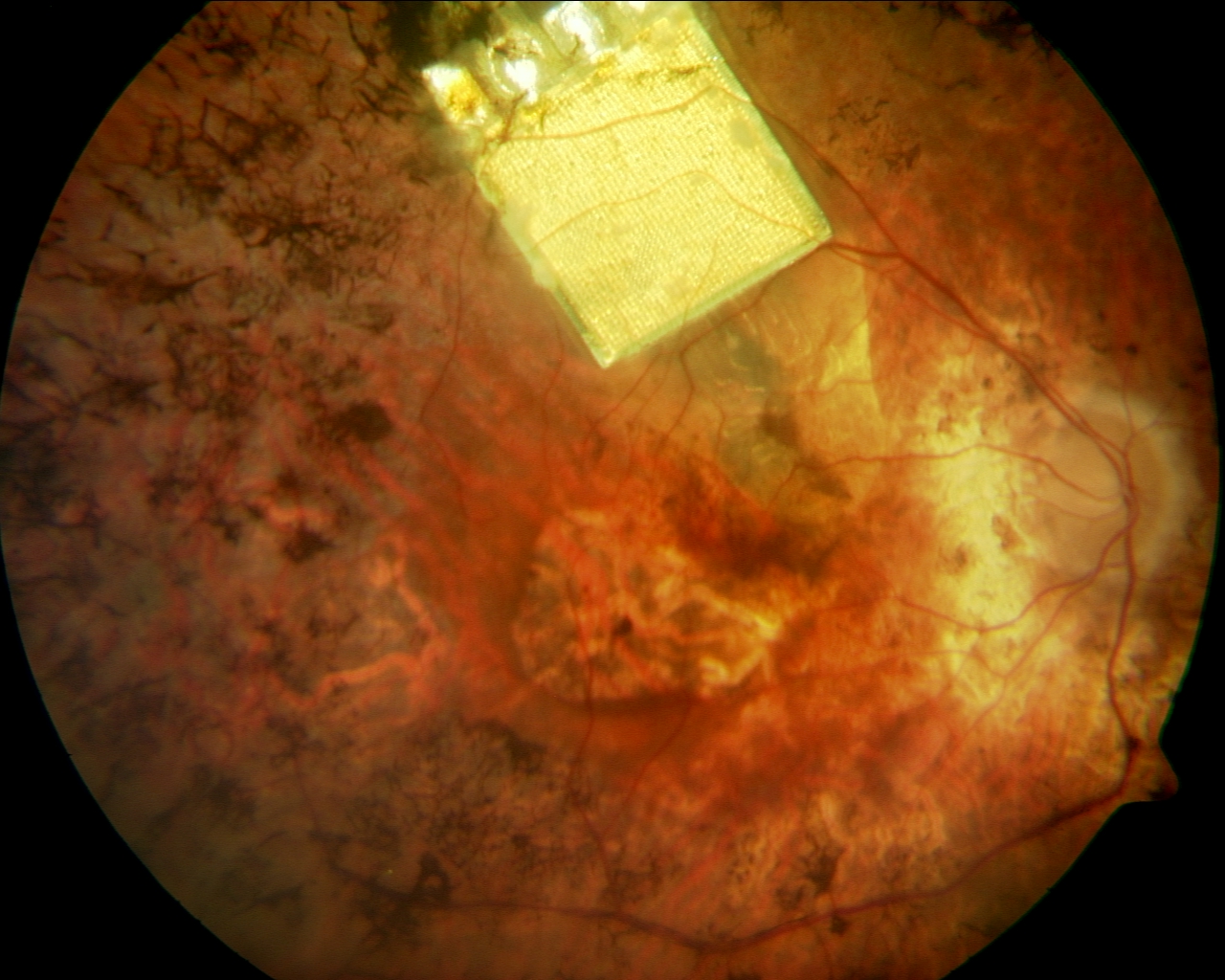
The retina implant uses electrodes on the chip to absorb light entering the eye and converts it into electrical energy to stimulate nerves within the retina
Ms Tsang Wy Suet Yun, a patient at the University of Hong Kong Eye Institute who was legally blind for 15 years, can see again. Ms Yun, who suffered from retinitis pigmentosa, underwent a surgery at the institute for retinal implants in February 2012 that treated her condition. The implant, a microchip developed by German company Retina Impant, helps restore lost vision.
The implant at the human clinical trial stage is a 3mm x 3mm microchip with 1,500 electrodes that is implanted below the retina, specifically in the macular region of the eye. Since the microchip needs electrical power to operate, transmitter coils are placed under the patient's skin and post-implant, the micrchip is turned on to begin sight restoration. The electrodes on the chip absorb the light entering the eye, converting it into electrical energy to stimulate nerves within the retina. This stimulation is then relayed to the brain through the optical nerve leading to improved field of vision.
As the patient needs to develop new internal processes for interpreting the images, it takes several weeks to fully realize new sight capabilities. According to the result announced by the company, Ms Yun can see light and able to read letters projected on a screen in the laboratory.
Retina Implant, which specializes in subretinal implants, conducted the first human trial in 2005. For the trial, subretinal microchips were implanted on 11 patients with retinitis pigmentosa. Unlike the patients who received epiretinal implants, those who received subretinal implants of Retina Implant were able to see objects and shapes so clearly that they could combine letters to form words and read at a basic level. The results showed such patients were also able to recognize foreign objects and no complications reported have been reported till date.
The company is presently carrying out a second, multi-center human clinical trial in Germany, Hong Kong and the UK. The company hopes to provide implants to a total of 60 patients under the second trial. In this trial, the patients will have the option to keep the implant permanently, unlike the first trial when the implant was removed after four months.
Dr Walter-G Wrobel, president and CEO, Retina Implant, says the focus is now to get regulatory approvals in the US and Europe for the microchip. "Our current focus is on the second clinical trial. We are concentrating on expanding the second human clinical trial in more locations around the world. We are also focussing on pursuing the CE mark in Europe and FDA approval in the US for our microchip."
The trial by Retina Implant is the first to implant patients with such a large number of electrodes and this study also presents the first proof-of-concept that such devices can restore reasonable and useful vision in blind human patients. Scientists at Massachusetts Institute of Technology in the US are also conducting trials with their own version of a subretinal implant. However, they do not anticipate implanting the chip in humans until 2013. Dr Wrobel, says, "To date, between our first and second human clinical trials, 26 patients have been implanted with our technology."
Explaining the superiority of the subretinal implant, Dr Wrobel says an epiretinal implant involves placing the chip on the retina and requires several parts to work: a camera and transmitter mounted on the eyeglasses of the patient, an implanted receiver, electrodes secured to the retina with a tack to keep the device in place and a battery pack worn on the patient's belt. "The camera captures images that are processed by the transmitter and receiver and turned into electrical pulses. The desired result is for the retina to respond to the pulses by perceiving them as patterns of light and dark spots which patients learn to interpret as meaningful images," he says, adding that clinical trial results have yielded some success.
Unlike the epiretinal approach, the subretinal approach leverages the natural movement of the eye. "Therefore, it does not require additional equipment to function. Our microchip also contains significantly more electrodes than the epiretinal option (1500 against 64). The increased number of electrodes allows for the light and dark images to appear more vibrant, making them easier to see," adds Dr Wrobel.
According to the company, the market volume for the microchip is about 30,000 units per annum worldwide, which roughly translates into sales of $2.2 billion (1.8 billion euros). The cost of surgery for Retina Implant's microchip is between $7,500 and $10,000 (6,000-8,000 euros).
Dr Wrobel says the entrance to other countries depends on availability of excellent surgeons at excellent institutions with a strong interest in retinal implants. "We have some activities going on for other countries, but it is too early to disclose any information," he says.
What is Retinitis pigmentosa?
Retinitis pigmentosa is a genetic condition that compromises vision and often leads to blindness. Signs and symptoms usually first appear in childhood with severe vision problems that start developing in early adulthood. Photoreceptor cells in the retina are genetically programed to produce the wrong amount of proteins which hinders the retina's ability to interpret images. This leads to demise of the cells gradually thereby deteriorating vision over time.




